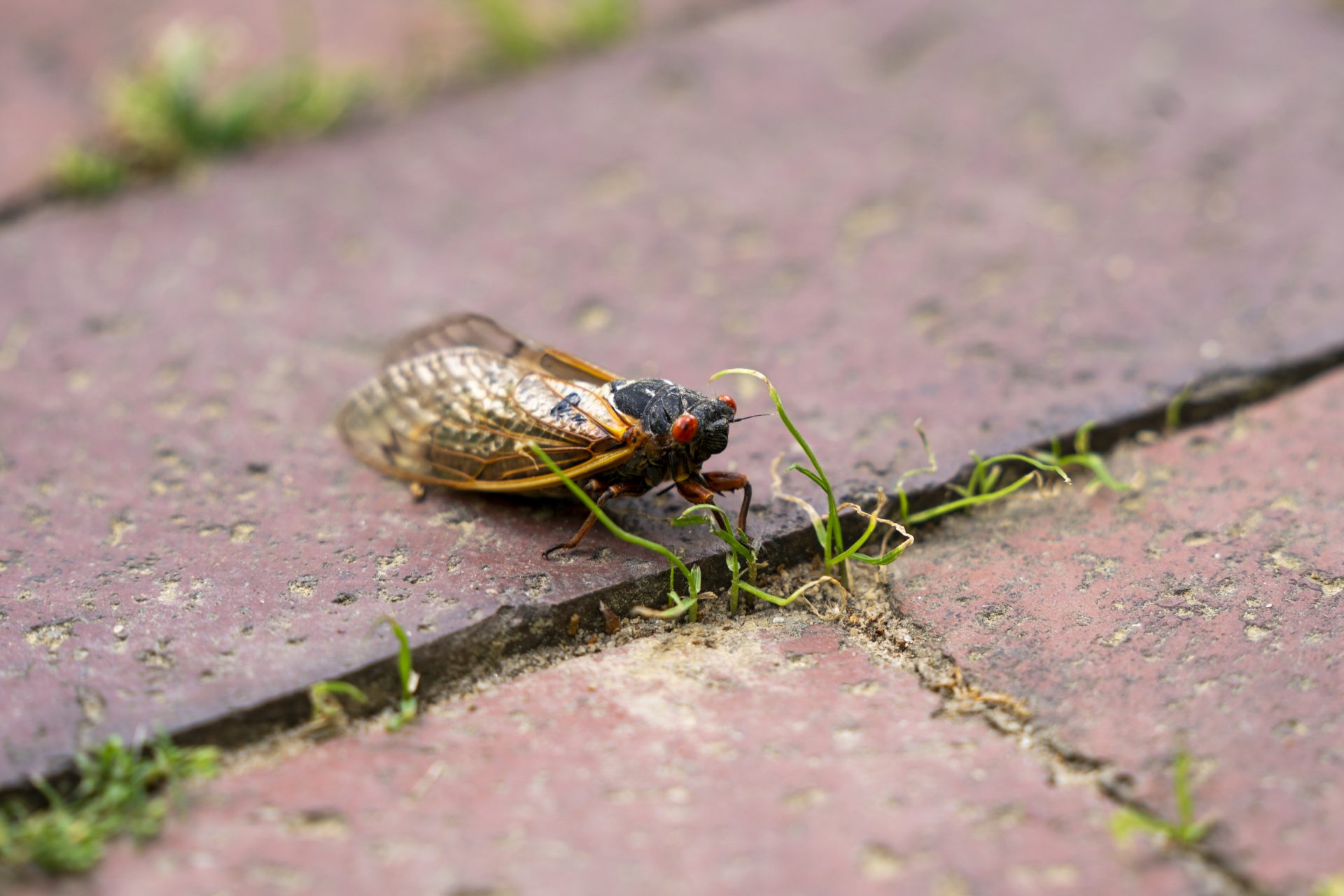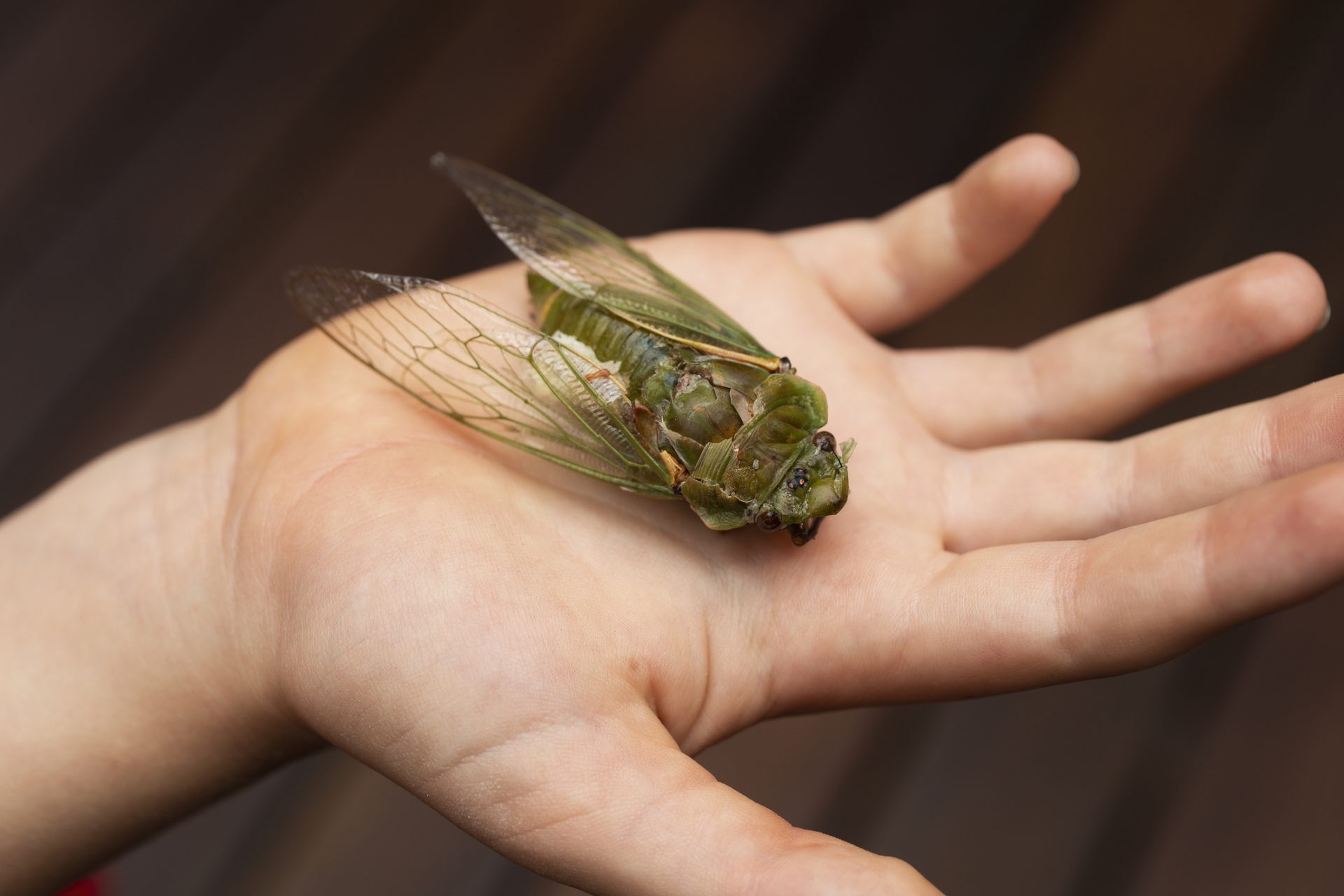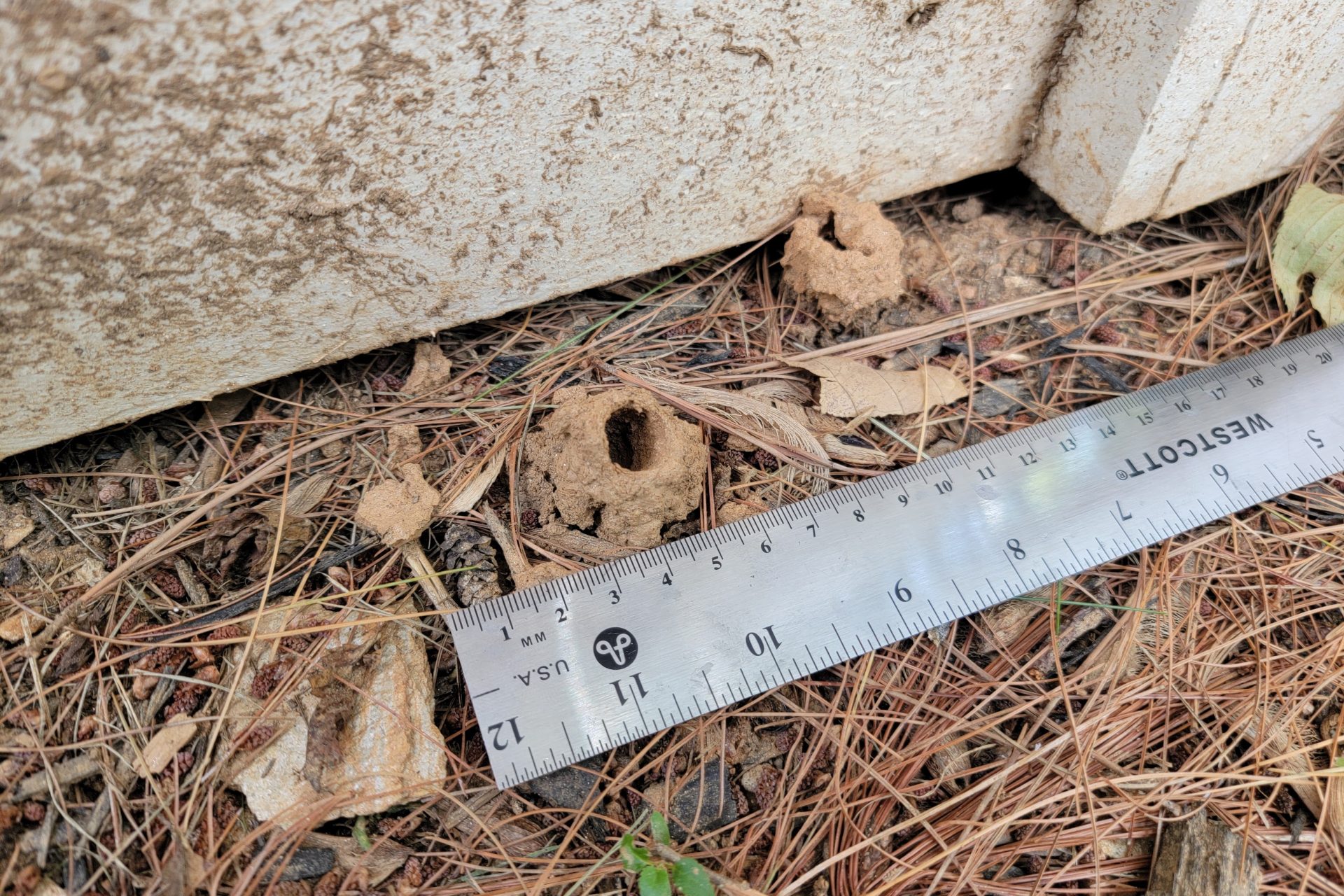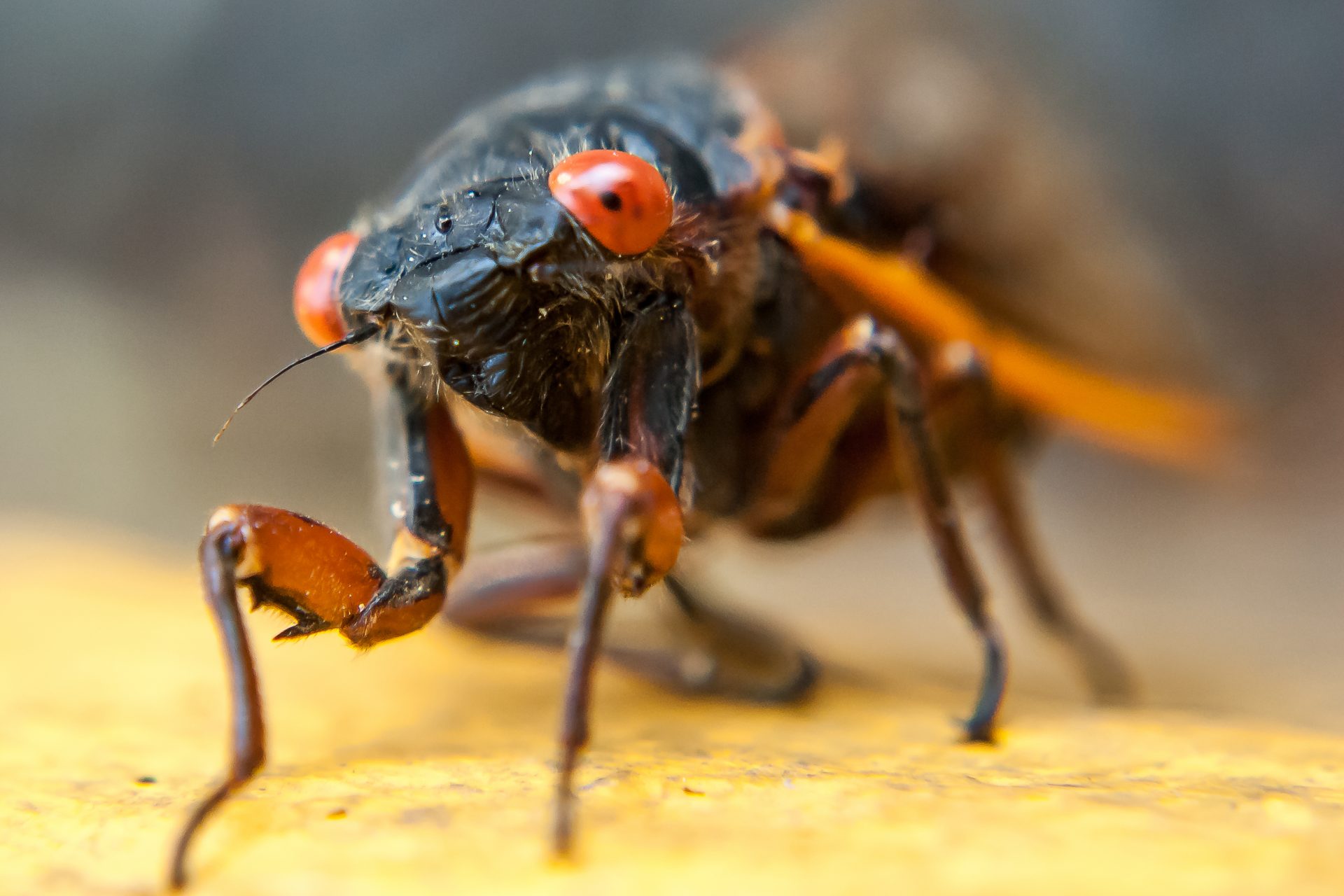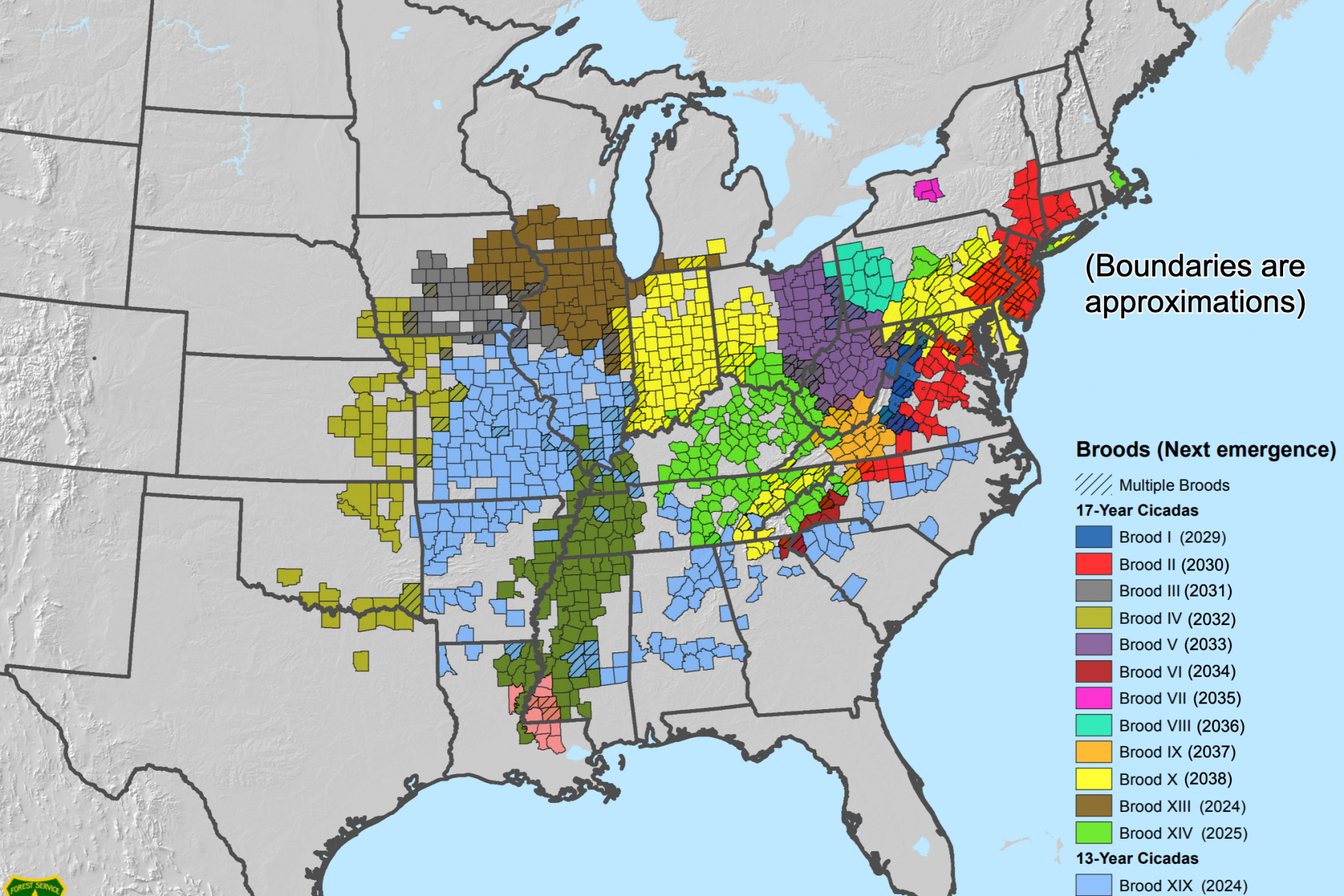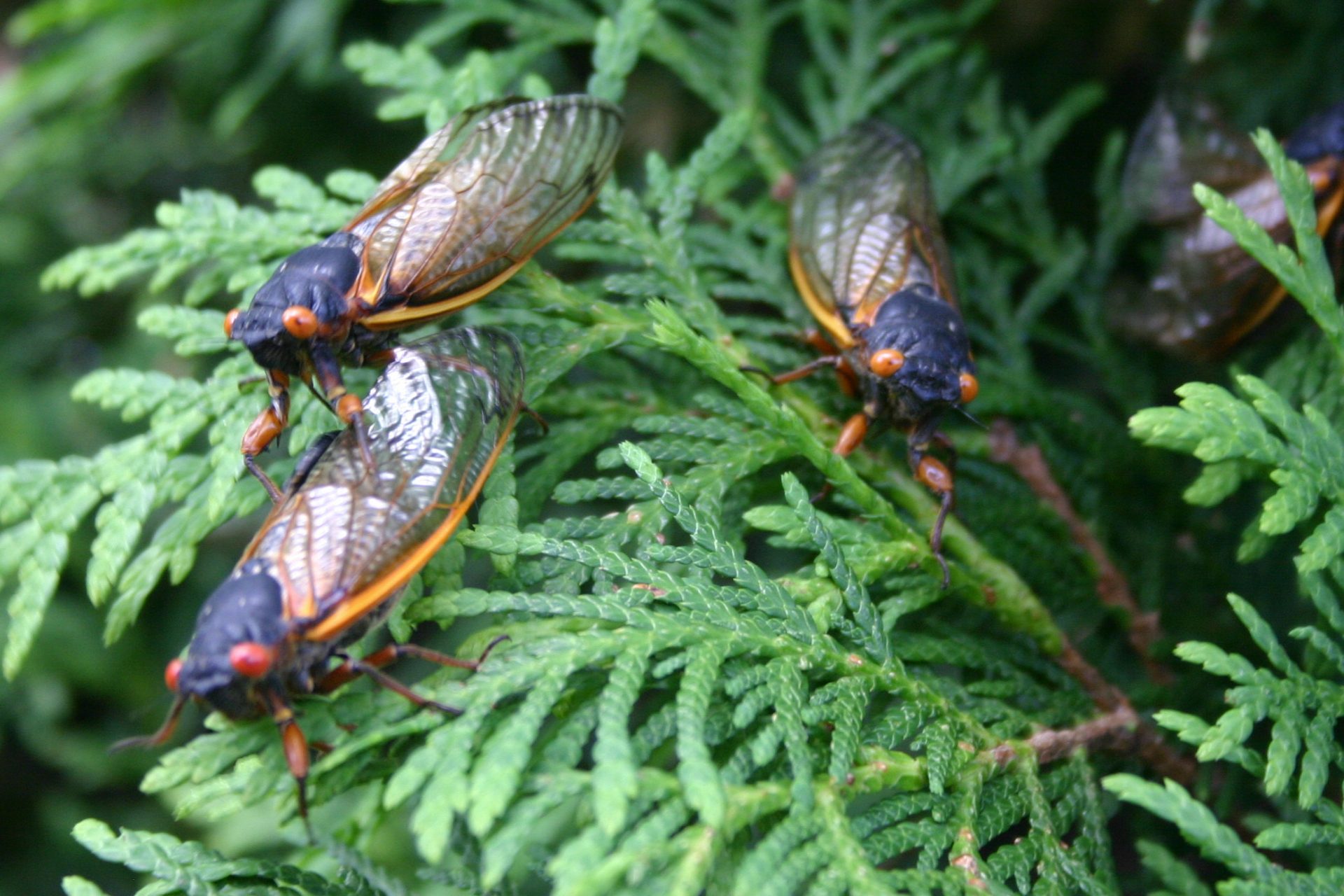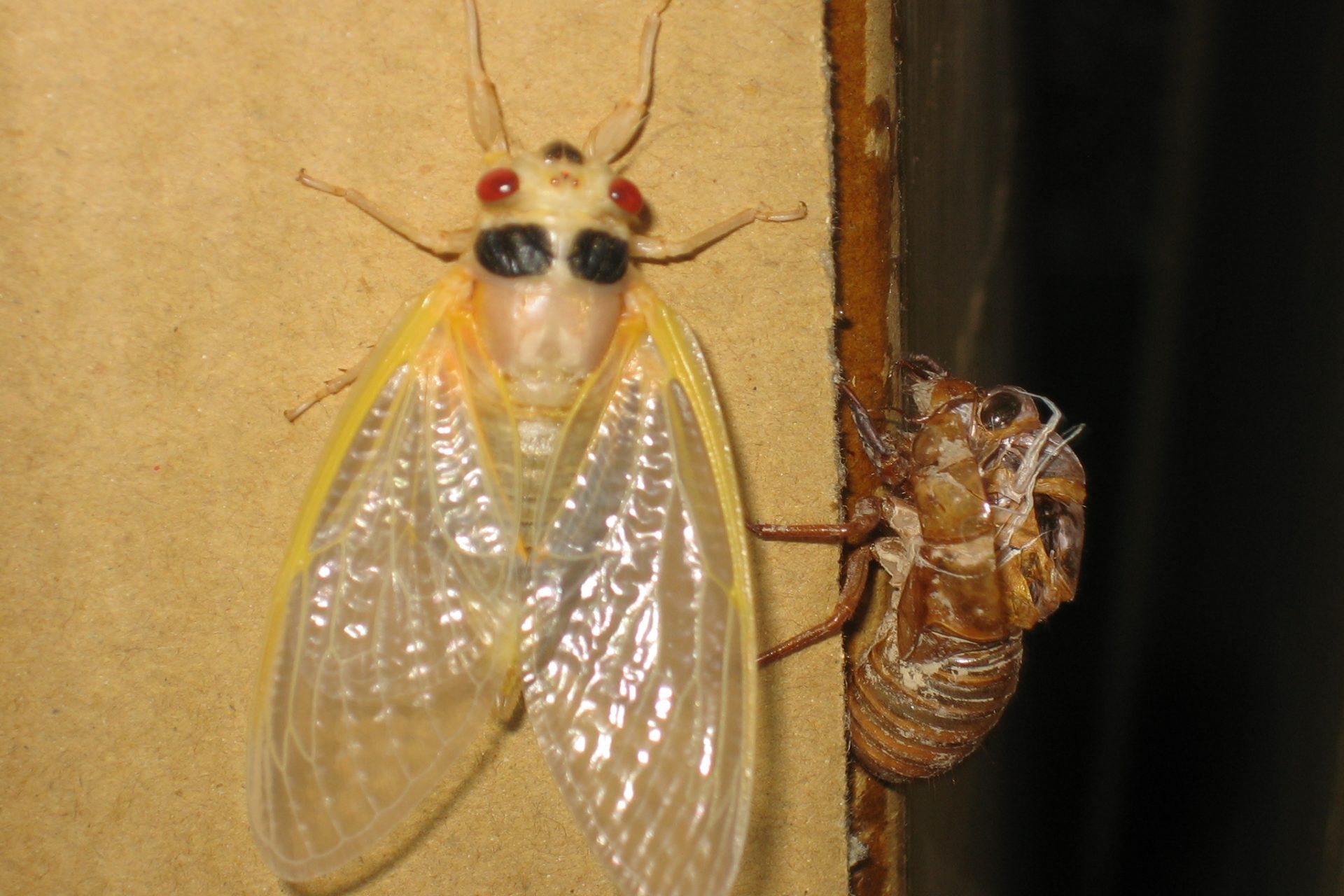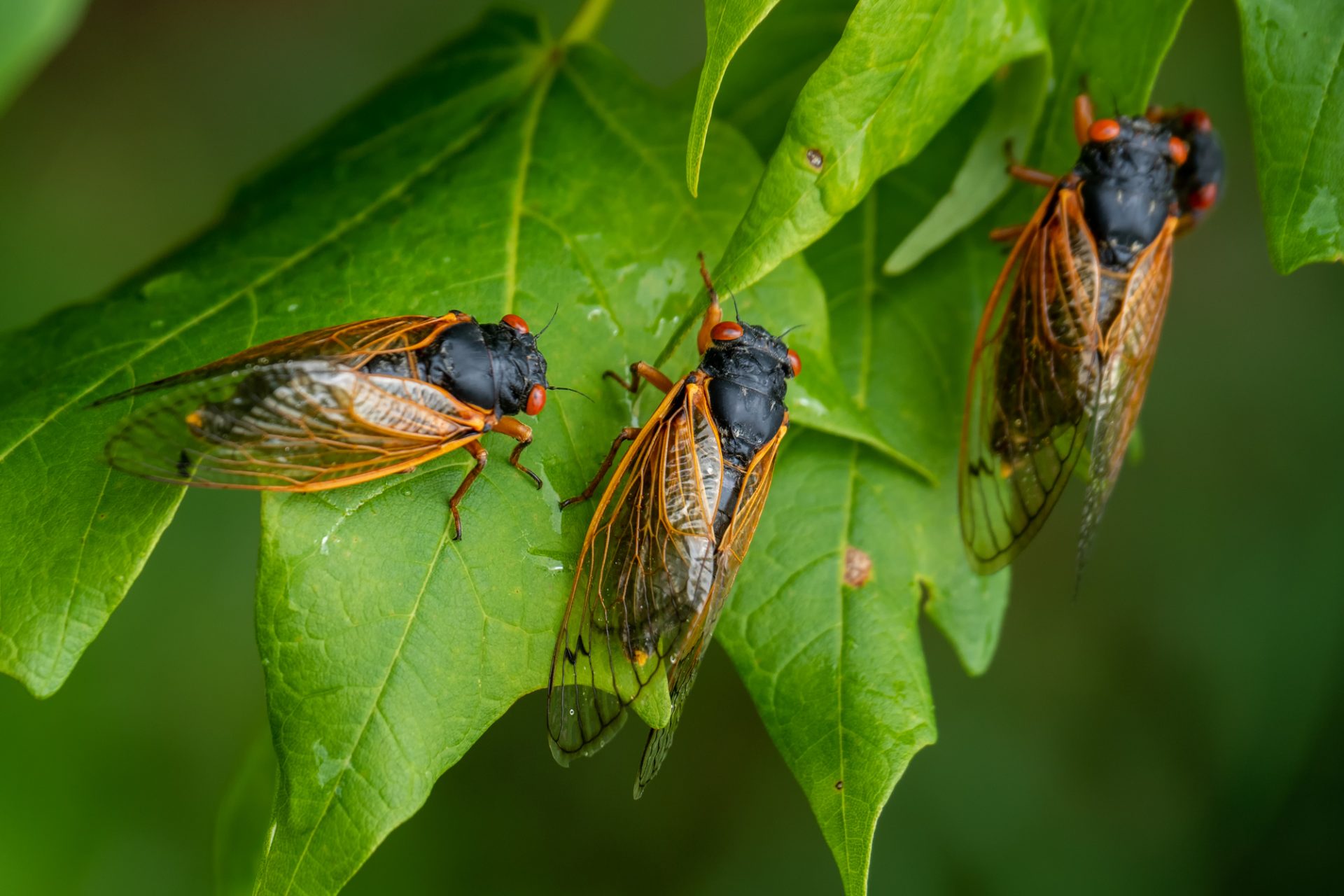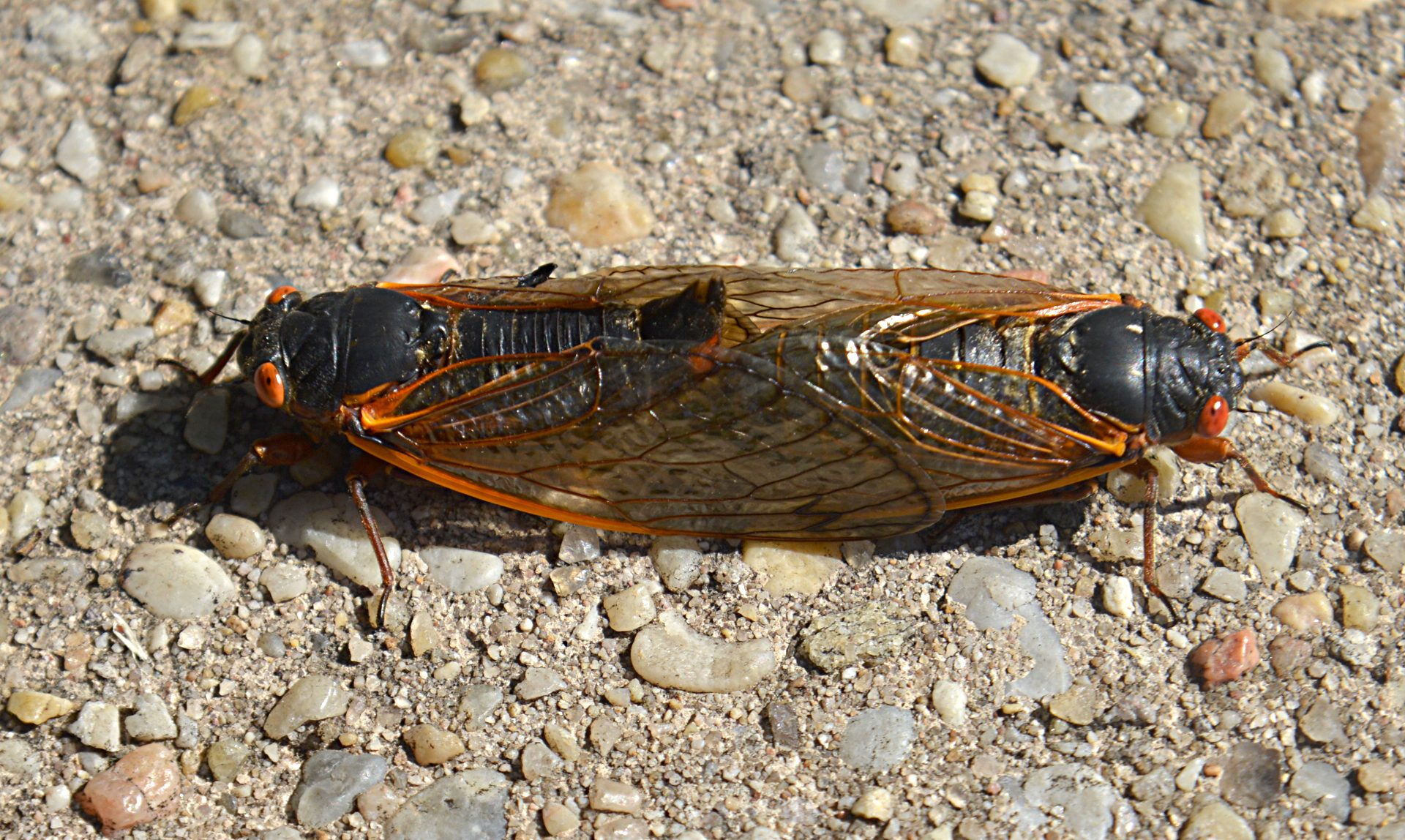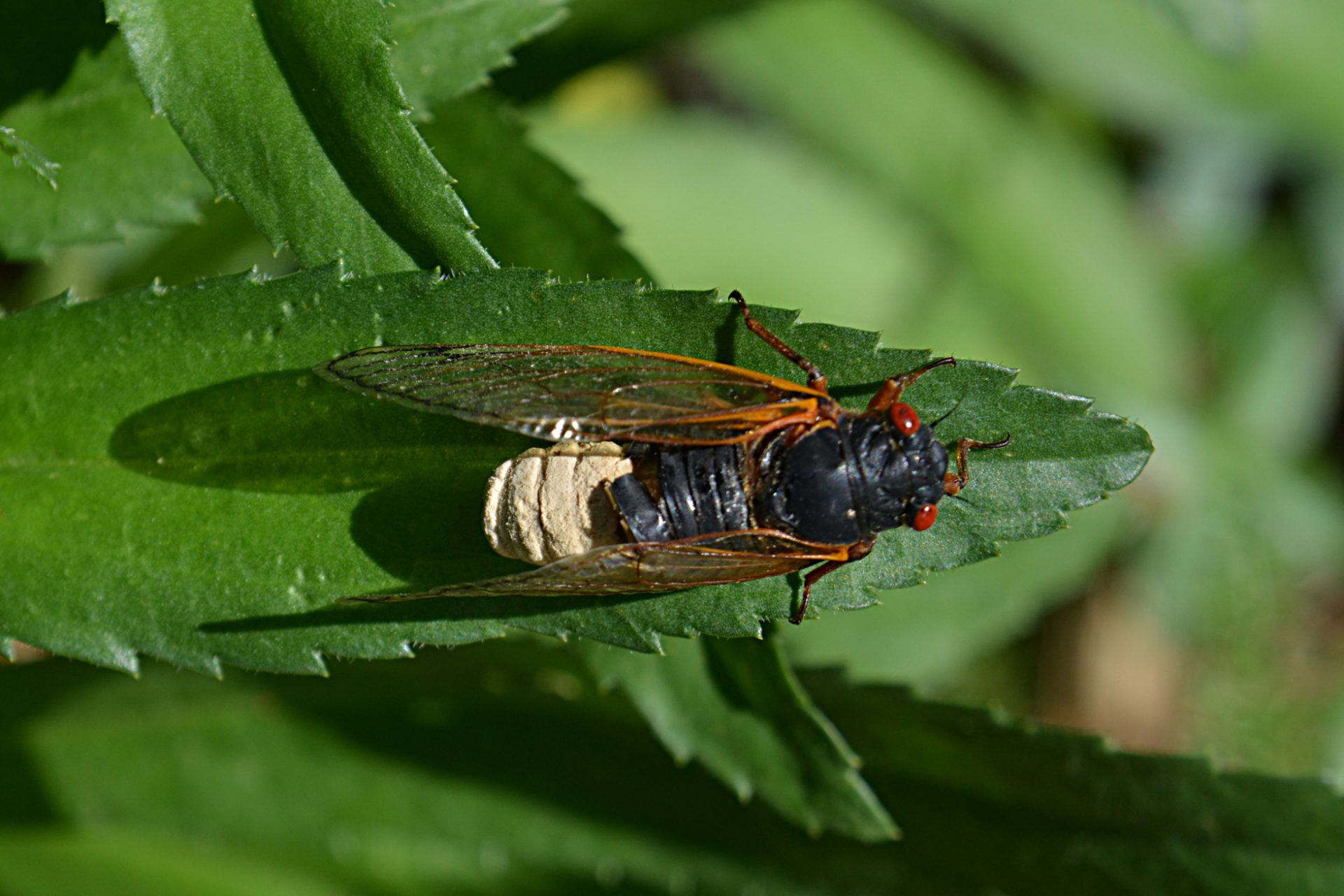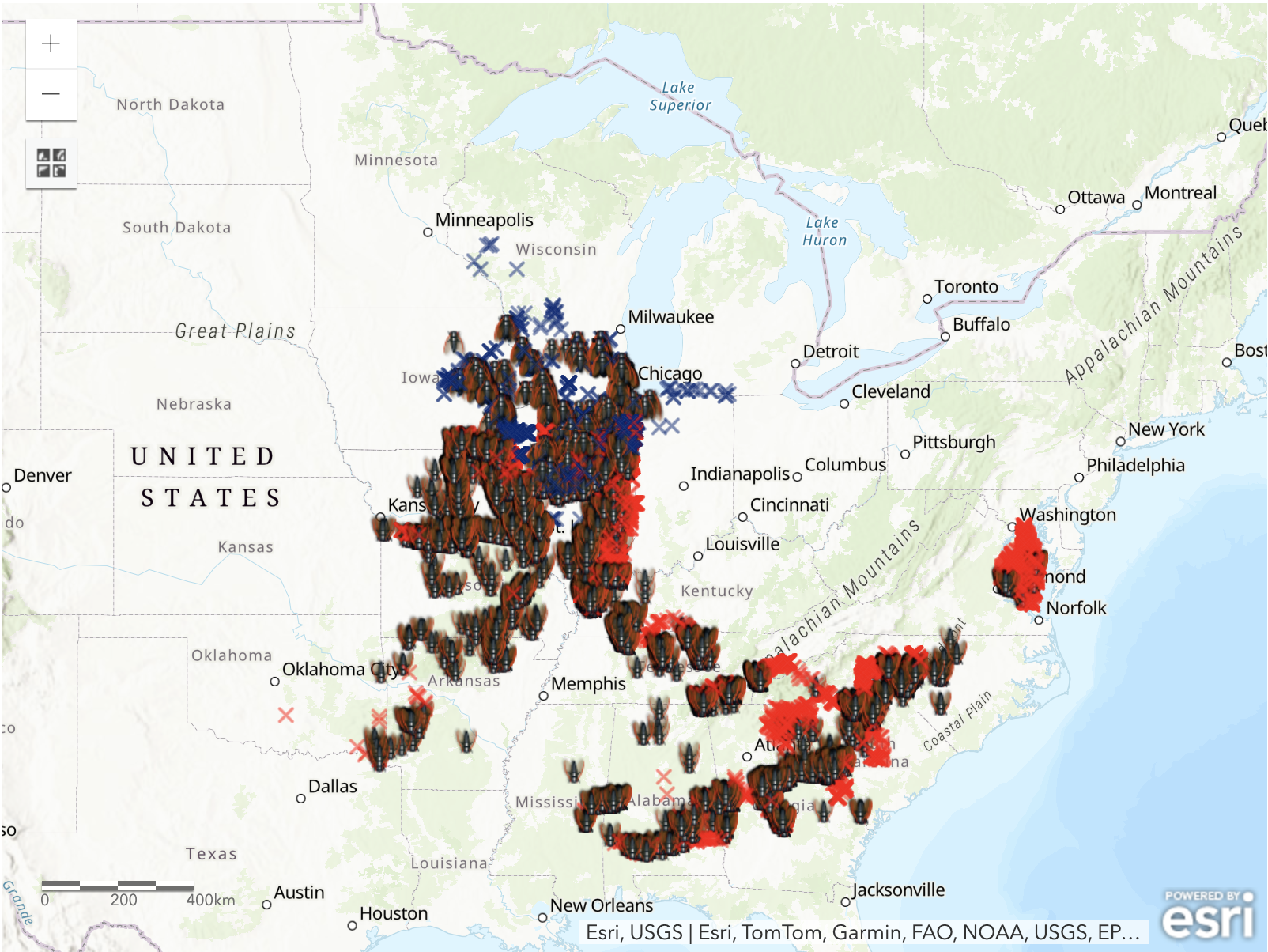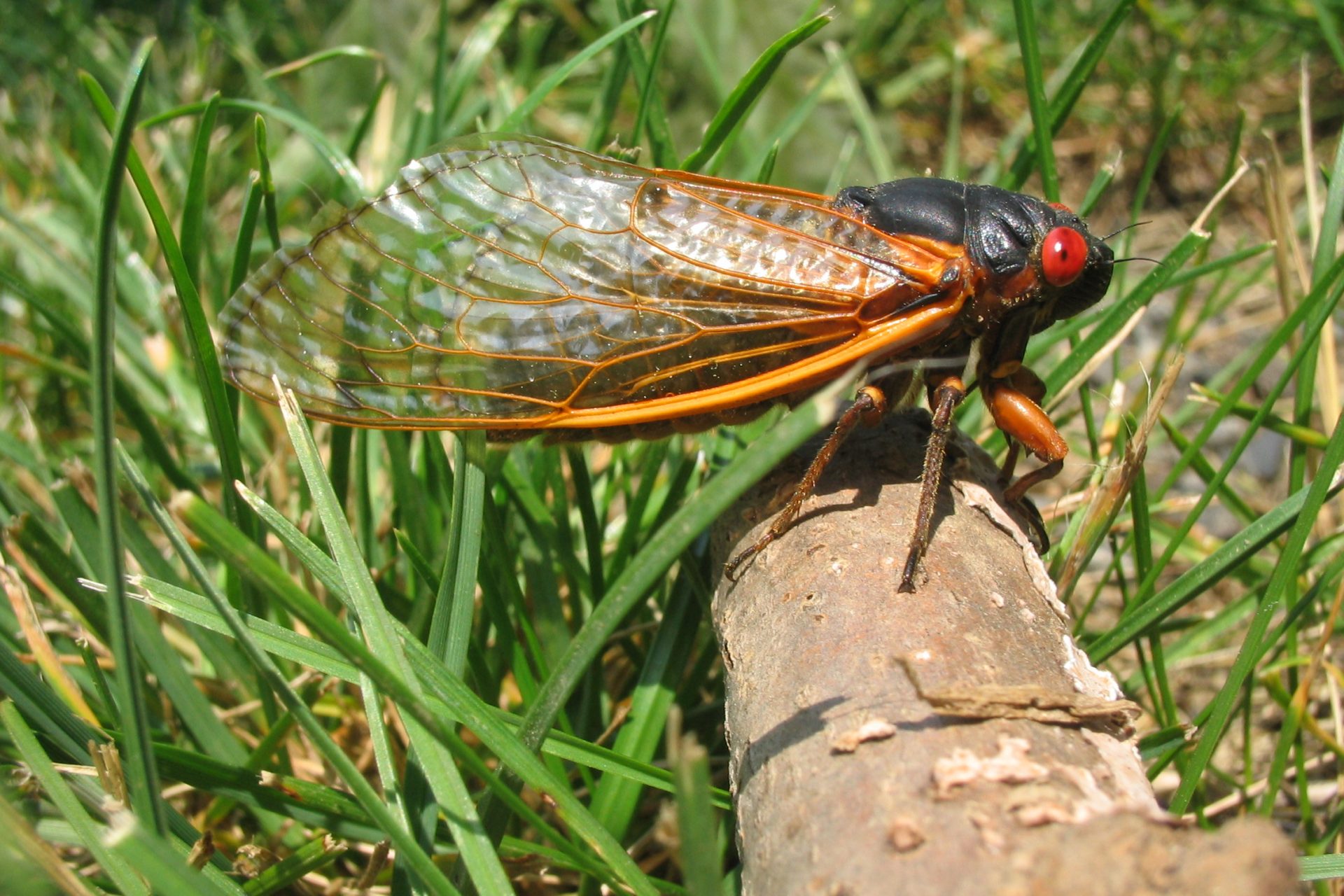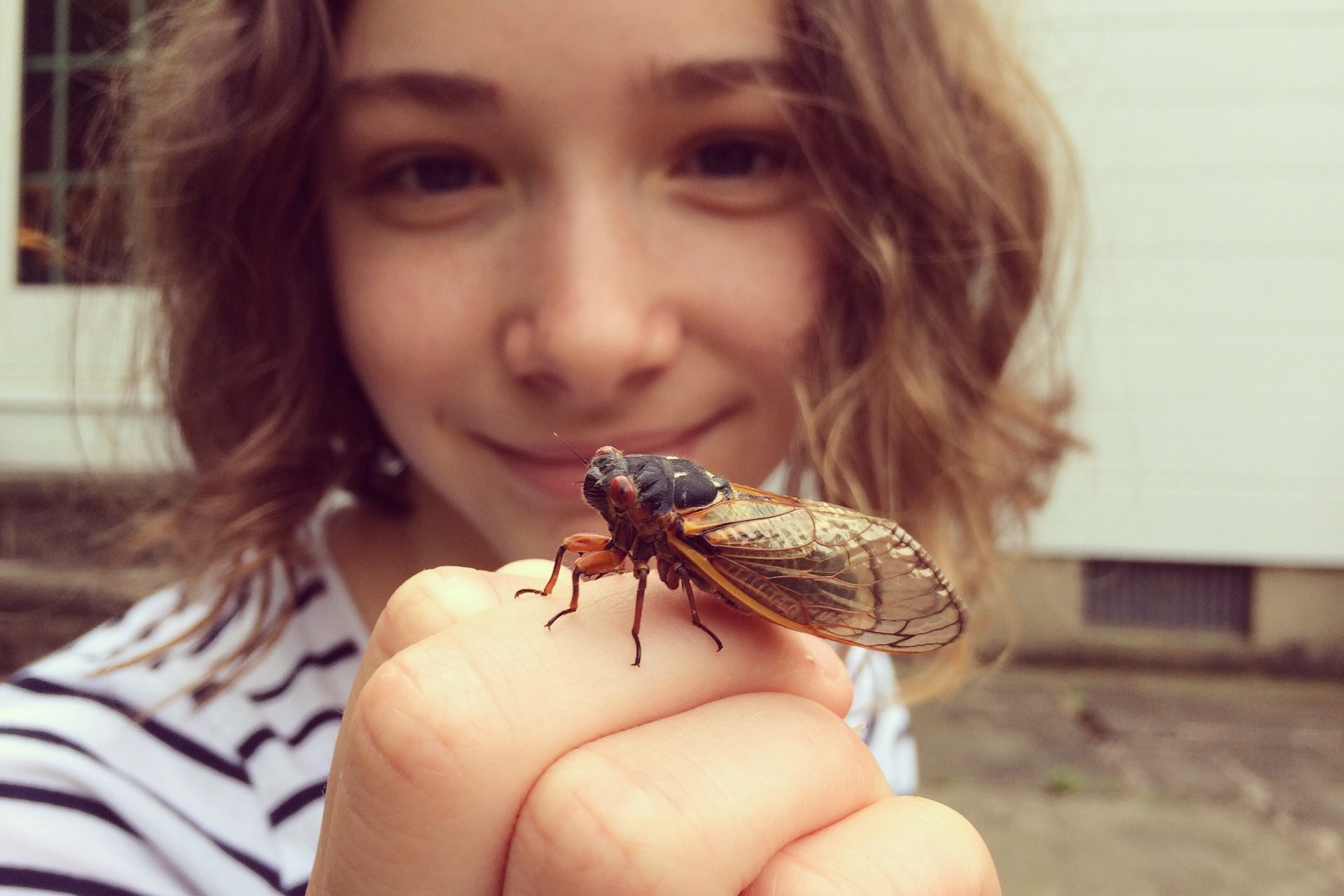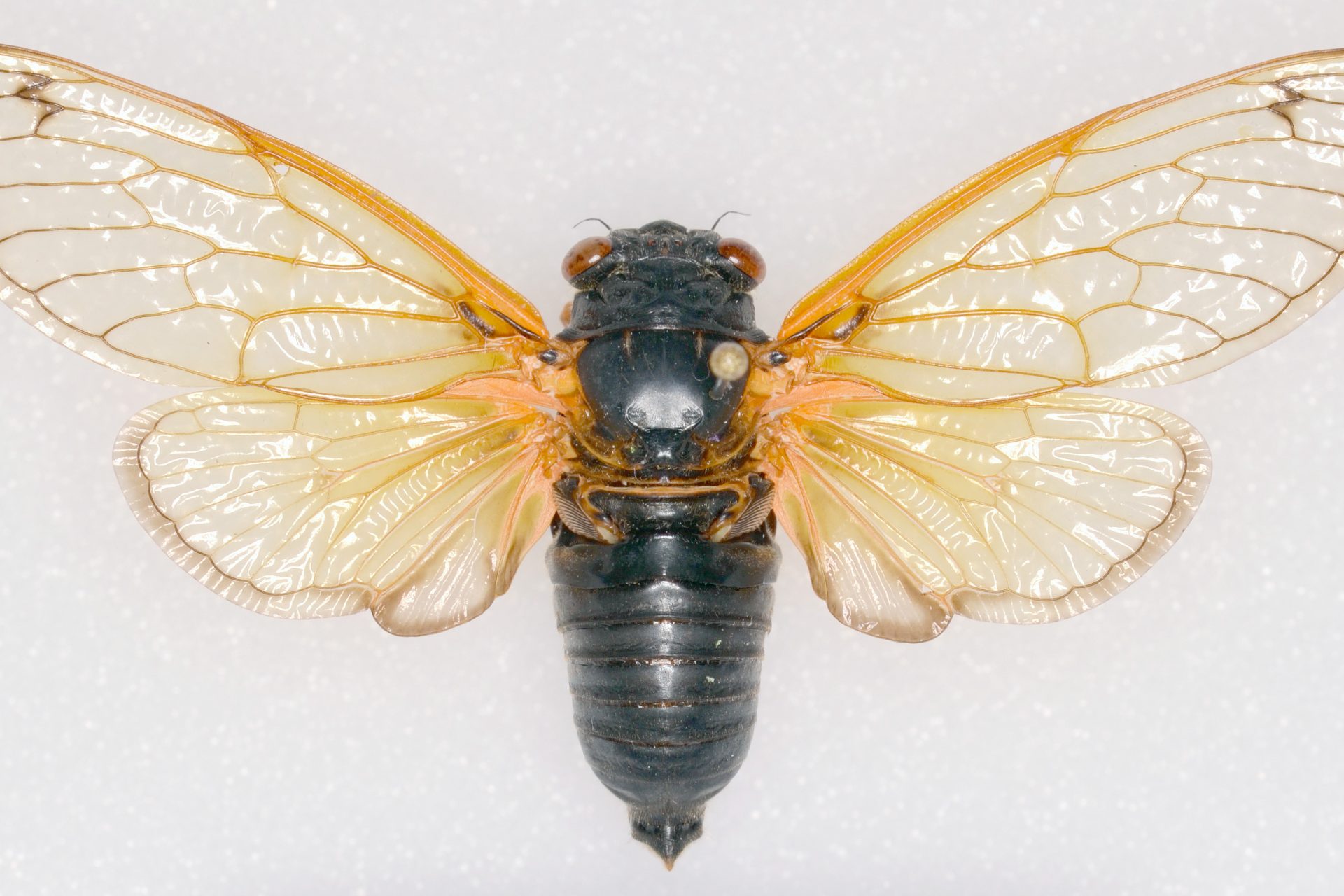Swarms of noisy bugs are now starting to cover parts of the United States
Billions of cicadas from two separate broods have begun emerging from their long time underground and taken parts of the United States by storm. Here's what you need to know about an event so rare it only happens once every few hundred years!
Cicadas are a mostly beneficial insect that also have extraordinary life cycles according to the National Wildlife Federation. These bugs spend the majority of their lifespan—which can be anywhere from 13 to 17 years—in their larva form underground. But are they dangerous? We'll look at that a little later.
Cicadas feed on fluids from plant roots until they reach adulthood and emerge in the spring to live above the surface for a few weeks before dying. Their rather predictable lifespan has allowed etymologies to sort out when a brood will emerge.
Photo Credit: Wiki Commons By Georgelazenby - Own work, CC BY-SA 4.0
“Adult periodical cicadas are black from above and orange underneath. They have bright red eyes and clear, membranous wings with black veins,” explained the National Wildlife Federation about a periodical cicada’s appearance.
The staggered life cycles of broods lead some to emerge more often than others but it also means that there are sometimes very rare occurrences when two different broods of cicadas will emerge from the ground at the same time.
Photo Credit: Wiki Commons By Andrew M. Liebhold, Michael J. Bohne, and Rebecca L. Lilja, Public Domain
A rare double brood emergence was set for parts of the United States in 2024 but the event was a lot more intriguing than that. The specific pairing of cicada broods that have begun emerging haven't done so together for hundreds of years according to the New York Times.
Photo Credit: Wiki Commons By Russkiypimp, Own work, Public Domain
Spring 2024 has been the first time since 1803 that Brood XIX, the Great Southern Brood, and Brood XIII, the Northern Illinois Brood, appeared together. This won't happen again for another 221 years.
Photo Credit: Wiki Commons By Jeff R, Public Domain
“Thomas Jefferson was president the last time that the Northern Illinois Brood’s 17-year cycle aligned with the Great Southern Brood’s 13-year period,” wrote Aimee Ortiz of the New York Times. But this dual emergence is also more significant than you think.
The Great Southern Brood appears every 13 years while the Northern Illinois Brood is on a 17-year emergence cycle. However, the Great Southern Brood is the largest of all periodical cicada broods CNN reported. This made the dual emergence a really big event for entomologists.
“It’s rare that we see this size of double brood emergence,” said University of Kentucky extension enzymologist and associate professor Dr. Jonathan Larson. “We’re talking about an absolute oddity of nature, one of America’s coolest insects.”
Photo Credit: Wiki Commons By G. Edward Johnson - Own work, CC BY 4.0
It isn't easy to put into perspective just how many cicadas have begun emerging in the United States, but Smithsonian National Museum of Natural History entomologist Floyd W. Shockley noted that the total number of bugs that could work their way out of the ground may reach nearly one trillion.
Photo Credit: Wiki Commons By G. Edward Johnson - Own work, CC BY 4.0
At just over an inch long, the number of cicadas predicted for this year could cover nearly sixteen miles or roughly twenty-six kilometers if placed end to end. “That cicada train would reach the moon and back 33 times,” Dr. Shockley said.
The Northern Illinois Brood will emerge mostly in Wisconsin and Illinois, as well as in the top right corner of Indiana while the Great Southern Brood will be seen mostly in Illinois and Missouri, but also in most of the southern states from North Carolina to Arkansas.
Photo Credit: Screenshot University of Connecticut
The Midwest and Southern United States will only be buzzing with the sounds of these cicada broods for about six weeks. Most of the bugs will only live about a month before they die according to Dr. Shockley.
Photo Credit: Wiki Commons By Pmjacoby - Own work, CC BY-SA 4.0
It’s important to point out that cicadas are not dangerous and pose no risk to humans, so there won’t be any damaging cicada apocalypse. Cicadas don’t bite and they also don’t carry any diseases so you don’t need to be afraid if you encounter one.
“It’s something that no one alive today has ever seen and no one alive today will ever see again,” Jim Louderman, a collections assistant at the Field Museum in Chicago, said according to NBC News. “For entomologists, it’s a really, really huge deal.”
Photo Credit: Wiki Commons By David C. Marshall - Own work, CC BY-SA 4.0
More for you
Top Stories



